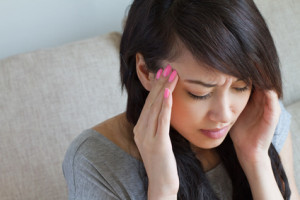- Calls to this hotline are currently being directed to Within Health, Fay or Eating Disorder Solutions
- Representatives are standing by 24/7 to help answer your questions
- All calls are confidential and HIPAA compliant
- There is no obligation or cost to call
- Eating Disorder Hope does not receive any commissions or fees dependent upon which provider you select
- Additional treatment providers are located on our directory or samhsa.gov
Injury, Trauma and Eating Disorders
Contributor: Ashley Nemiro, MS, LMFTA, PhD Candidate at Carolina House
 The prevalence of self-injury among eating disorder patients is around 25-40%. This is clearly something that we should be talking about openly. Just like the eating disorder, the self-injurious behavior serves as a way to help cope with, numb out, or release built up emotions that tend to feel just too difficult to bare.
The prevalence of self-injury among eating disorder patients is around 25-40%. This is clearly something that we should be talking about openly. Just like the eating disorder, the self-injurious behavior serves as a way to help cope with, numb out, or release built up emotions that tend to feel just too difficult to bare.
Most people who self harm have a difficult time expressing their emotions and have a severe dislike for themselves and their bodies. People find that dealing with the physical pain of self-injury is easier to deal with than the overwhelming emotional pain that they are experiencing.
Finding Healthier Ways to Cope
It’s important to remember that even though one may feel a peaceful or calming affect after the self-injury, it is only temporary. Since this feeling is only temporary, it is important to find healthier ways of coping.
Secondly, dealing with the underlying issues that are causing the emotional suffering will assist in finding long-term sustainable relief. It is important to find a therapist who specializes in this behavior and who is someone you can trust. If one is feeling the urge to self-injure here is a list of suggestions that might help to overcome the urge:
What Causes Someone to Self-Injure?
 It is widely thought that people who self-injury have a history of sexual trauma. This is not always the truth. There are many factors that could cause someone to be self-injurious as a way to cope with negative emotions in the moment.
It is widely thought that people who self-injury have a history of sexual trauma. This is not always the truth. There are many factors that could cause someone to be self-injurious as a way to cope with negative emotions in the moment.
The most important thing to remember is that it self-injury is not the answer. Using skills and not symptoms is a more effective solution when you feel emotional fullness.
Furthermore, it is well known that histories of trauma are often encountered in individuals with eating disorders (it’s important to note that not all individuals with eating disorders have a trauma history). Many events can be traumatic, such as abuse, sexual assault, vicarious trauma, relationship problems, death of a loved one, and problems in the family.
Numbing the “Feeling” of Trauma
Survivors of trauma can struggle with shame, guilt, fear, and a strong dislike for their bodies or feeling uncomfortable in their own skin. One of the primary functions of an eating disorder is to avoid and cope with painful or uncomfortable emotions by distancing or numbing yourself from “feeling”.
One’s negative feelings of themselves are projected on to the body. The eating disorder tricks you into thinking it is your friend and it is protecting you. It’s not your friend.
Seeking Support
The best thing you can do for yourself or a friend that is suffering from an eating disorder, self-injuring, or is a survivor of trauma is to seek support.
Everyone is worthy of support and it’s out there. Remember that you can learn to use skills and not symptoms to cope with troubling emotions.
Community Discussion – Share your thoughts here!
Self-injury can take many forms, have you or your loved one experienced this with your eating disorder? What tools worked for you in addressing and overcoming this issue in your recovery?
References:
- Levitt, J. L., & Sansone, R. A. (2007). Past Mysteries and Current Challenges: Eating Disorders and Trauma. Eating Disorders, 15(4), 281-283.
- Ross, S., Heath, N. L. and Toste, J. R. (2009), Non-Suicidal Self-Injury and Eating Pathology in High School Students. American Journal of Orthopsychiatry, 79: 83–92. doi: 10.1037/a0014826
The opinions and views of our guest contributors are shared to provide a broad perspective of eating disorders. These are not necessarily the views of Eating Disorder Hope, but an effort to offer discussion of various issues by different concerned individuals.
Last Updated & Reviewed By: Jacquelyn Ekern, MS, LPC on March 13th, 2015
Published on EatingDisorderHope.com

